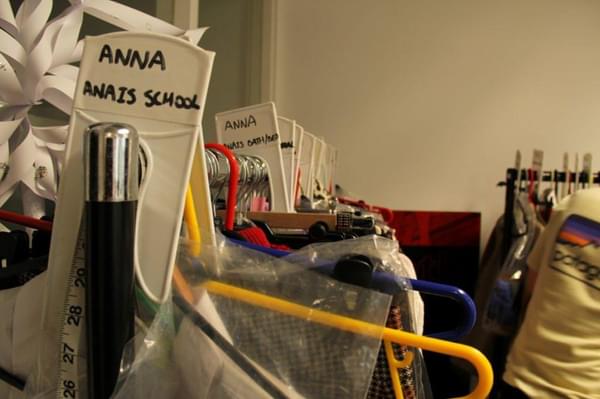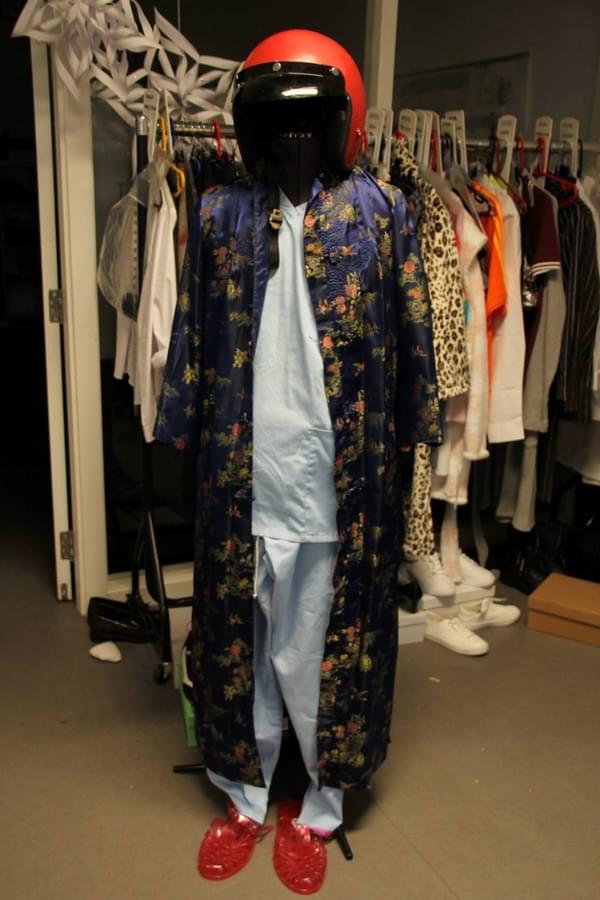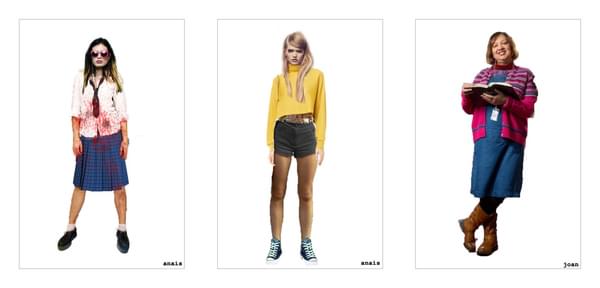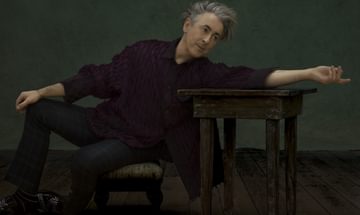News Story

BEHIND THE COSTUMES OF THE PANOPTICON
The Panopticon is a new play adapted for the stage by Jenni Fagan, from her 2012 novel of the same name, and directed by Debbie Hannan. Fifteen years old Anais Hendricks, the smart, funny and fierce heroine, has spent her life in the care system and is brought to the Panopticon, a young offender’s institution after she is accused of assaulting a police officer. In the Panopticon, everyone can be observed any time of the day and night, without ever knowing when, or by whom; and Anais soon develops intense bond with her fellow residents, asking us to question our perceptions of youth, crime, surveillance and the care system.
Anais’ fashion, in the novel as in the play, is central to her character. She enters the stage in her signature cat eye liner and star-shaped sunglasses, and continues to invent herself through a vintage inspired, eclectic style that she spends time and care creating for herself. The Panopticon’s designer Max Johns, told us about his process creating the play’s visual identity, and the specific meaning of fashion for the play’s heroine, Anais.

View of the costume department for the panopticon (2019)
The process of creating the costumes starts with a close reading of the script, and an analysis of the story that will outline all necessary costume changes embedded in the narrative, Max explains, before going onto thinking about the characters, and what the costumes can bring to them and their stories. Working closely with costume supervisor Emma Clifton, and the National Theatre of Scotland’s costume department, The Panopticon costume team sourced material from the wardrobe at Rockvilla, and in vintage shops and charity shops across the city, as well as some high street stores.
“Because it is an eclectic mix of things in the show, and it is very modern, [the costumes are] bought, borrowed, and hired, rather than made.” For this reason, Max decided to use collages made from found images, rather than drawing, to construct each character’s costumes throughout the play.
The Panopticon’s costumes have also helped transcribe the novel’s atmosphere and its structure onto the stage. With a cast of nine, seven of whom are playing several characters, up to five or six parts at times, coordinating costumes changes is both a challenge and an opportunity to further the story through costumes and visual design.
“Because of the surreal nature of the story, and the way in which Anais perceives the world she is in (…) there is something quite interesting about having the same faces re-appearing in different costumes again and again. It adds to the chaos of Anais’s perception of the world she is in.”

A costume for the panopticon (2019)
Anais’ costumes play an essential role in her identity and character development throughout both play and novel. Fashion is not only an escape from the struggles of her life, but also a tool through which she can imagine herself beyond her circumstances, craft an identity outside of the one that the adults in her life want to impose on her.
“She has this innate sense of style and she is really into vintage clothes (…) she defies what a lot of people’s stereotypes about children growing up in the care system might be.”Max explains how Anais uses clothing as a tool to regain agency and make a statement about her desires and ambitions: “She is a bold character, [her style] says ‘I am not conforming to any idea of what I should look like or what I should be, I am doing my own thing.”
The heroine’s costumes are also an important narrative device, showing the development of her character. We meet Anais in the first scene, wearing her school uniform, covered in blood, after she has gone missing for several days and is accused of assaulting a police officer. As she changes costumes, Anais’ personality unfolds, and her costumes indicate her state of mind.
In the last scene, we see Anais wearing full vintage: “We see this version of Anais that she has pictured herself as and she able to live as” Max says of this final costume, a further demonstration of the organic relationship between the character’s path and her fashion’s choices.

Max johns’ collages for anais (left and centre), and joan (right), 2019.

